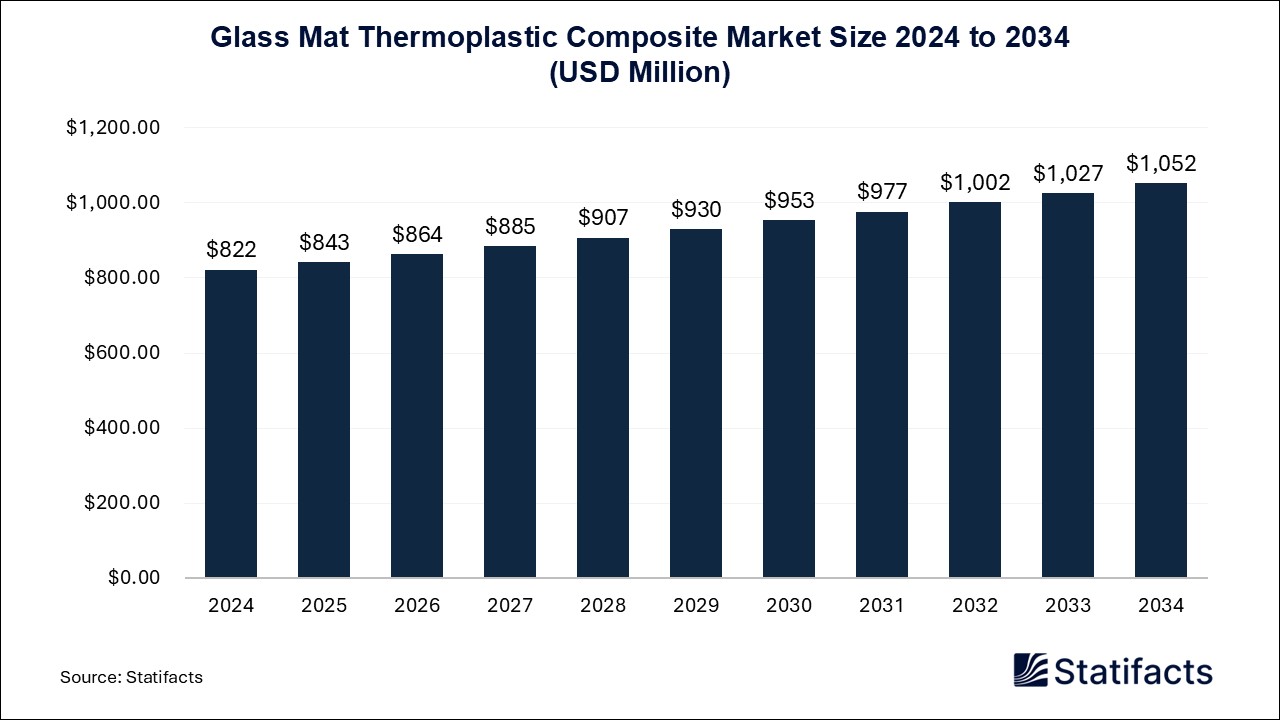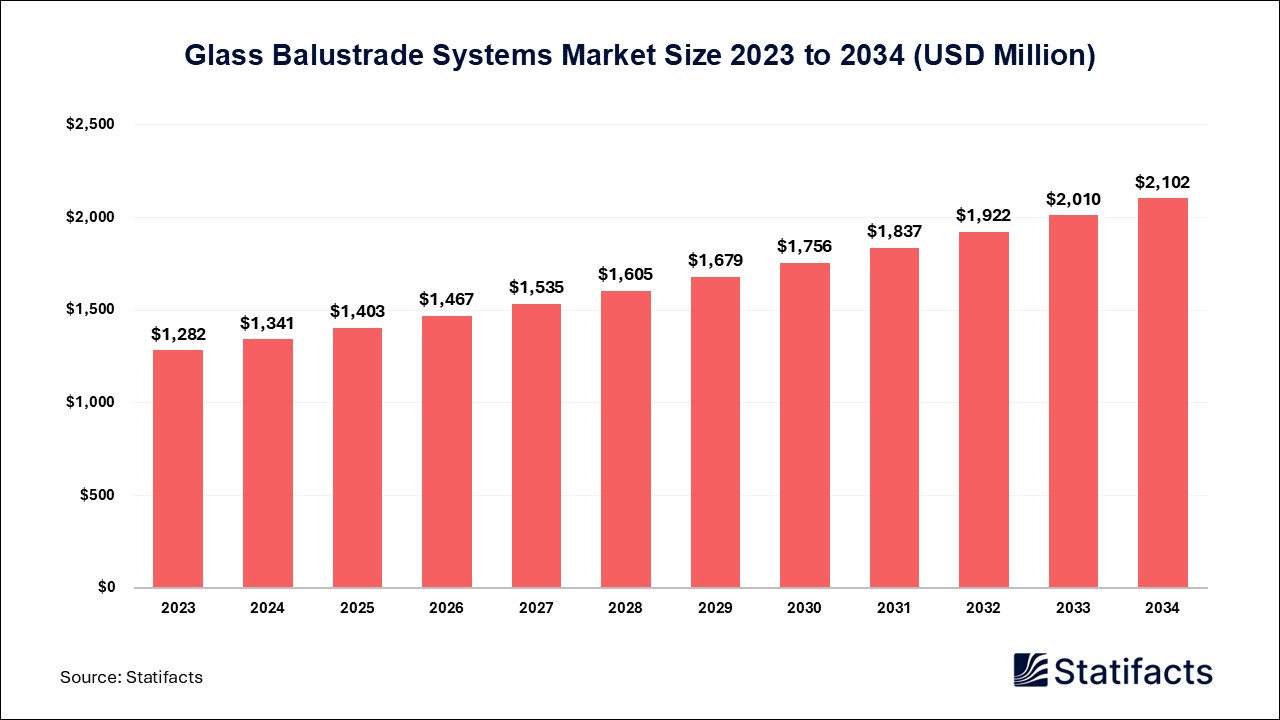Last Updated: 29 Jul 2025
Source: Statifacts
By clicking “Accept All Cookies” you agree to the storing of cookies on your device to enhance site navigation, analyze site usage, and assist in our marketing efforts.
Privacy PolicyThe US industrial biotechnology market size accounted for USD 69.23 million in 2024 and is predicted to touch around USD 154.49 million by 2034, growing at a CAGR of 8.35% from 2025 to 2034. Key proteins like EGF, VEGF, and FGF play a crucial role in U.S. biotechnology by driving cell proliferation, migration, differentiation, and tissue regeneration, especially within microbial engineering and bio manufacturing applications. Advances in protein engineering and biomaterial delivery systems are overcoming challenges like poor stability, low recombinant yields, and limited half-life, enabling precise control over biologic activity and improving efficiency. These innovations are vital in regenerative medicine, biopharmaceutical production, and bio-based manufacturing, making growth factors a foundational pillar of the U.S. biotech market.
| Reports Attributes | Statistics |
| Market Size in 2024 | USD 69.23 Million |
| Market Size in 2025 | USD 73.85 Million |
| Market Size in 2031 | USD 118.03 Million |
| Market Size by 2034 | USD 154.49 Million |
| CAGR 2025 to 2034 | 8.35% |
| Base Year | 2024 |
| Forecast Period | 2025 to 2034 |
The US biotechnology sector, particularly in microbial engineering and bio manufacturing, leverages cutting-edge technologies such as CRISPR gene editing, fermentation, and synthetic biology to deliver innovations across healthcare, agriculture, industrial processing, and environmental remediation. While microbial platforms produce antibiotics, enzymes, and nutrients, biomanufacturing scales these outputs for pharmaceutical drugs, vaccines, biofuels, biochemicals, and food ingredients. This dynamic field integrates life-science research with real-world applications.
Artificial intelligence is transforming U.S. Industrial biotechnology by dramatically accelerating drug discovery. Precision medicine and bioprocess optimization. AI-driven platforms now predict protein structures, model molecular interactions, and identify promising therapeutic candidates, reducing time to lead from years to weeks. For instance, in 2023, AI-powered tools achieved a 52.3% software market share in biotech and enabled drug target identification applications to capture 39.7% of the AI biotech landscape. North America dominated with a 40.8% regional share, underscoring U.S. leadership. By harnessing deep learning, ML algorithms, and big data analytics, companies are not only streamlining experimental workflows and reducing costs but also improving diagnostic accuracy and personalized treatment strategies. This integration of AI heralds a new era where computational innovation is the cornerstone.
The biotechnology industry is generating biological data at a breakneck pace, doubling roughly every two years, driving the need for AI tools capable of analysing and interpreting vast, complex datasets. AI excels in pattern recognition across genomics, proteomics, and clinical trials, enabling researchers to identify novel drug candidates and biomarkers far quicker than traditional methods. Predictive modelling reduces experimental failure rates, improves decision-making precision, and accelerates timelines across research and development. As datasets grow in volume and complexity, AI’s role becomes increasingly indispensable in converting raw data into actionable insights.
The growing emphasis on individualized therapies is catalysing AI adoption, as biotech firms use machine learning to tailor treatments based on genetic and clinical data. AI-driven simulations and predictive models trim costly, time-consuming trial stages, reducing resource allocation needs. For example, platforms like IBM Watson Health and Atomise improve compound screening accuracy and expedite therapeutic hypothesis generation. Regulatory authorities are also embracing AI for compliance, with streamlined data analysis enabling faster approvals. These factors collectively lead to more effective treatments, cost efficiencies, and faster patient access.
The adoption of AI in biotechnology faces a significant obstacle due to the high implementation and ongoing maintenance costs. Advanced AI platforms often come with substantial expenses ranging from USD 10,000 to several million for software, hardware, and integration, posing a steep barrier for SMEs and merging biotech firms. In addition to upfront investment, continuous costs related to licensing updates, skilled peroneal, and data management further exacerbate the financial strain. Smaller players, in particular, struggle to justify these costs without immediate high returns, limiting the widespread adoption of AI-driven solutions in these sectors.
The rising application of AI in genomic disease therapies represents a powerful growth frontier. In 2023, AI-powered platforms like Zinc fingers and alternative to CRISPR enabled highly accurate genetic modifications, supporting progress in treating sickle cell anaemia, cystic fibrosis, and various cancers. By rapidly analysing large genomic datasets, AI allows researchers to pinpoint therapeutic targets and model molecular interactions with improved precision. This trend is poised to reshape personalized medicine, offering faster, more target treatments and unlocking significant value in genomics-based biotech innovation.
Generative AI is revolutionizing drug discovery and protein engineering by exploring novel molecular structures and sequences that were previously unreachable. These algorithms not only generate new compounds but also optimize their functionality and synthesis pathways. This capability is creating unprecedented opportunities in pharmaceuticals, industrial enzymes, and synthetic biology. As biotech firms increasingly adopt generative models, they can accelerate the launch of therapeutics and bio-based products, establishing a new paradigm for rapid innovation in the biotech landscape.
Bio manufacturing stands as the powerhouse of the U.S. biotechnology market due to its unparalleled integration across healthcare, food, and industrial sectors. Utilizing microbial, mammalian, and plant cell cultures, this segment delivers vital products like vaccines, monoclonal antibodies, growth factors, and enzymes. The U.S. boasts one of the world’s most advanced bio manufacturing infrastructures, supported by GMP-certified facilities and backed by federal investment aimed at bridging the gap between innovation and production. Its industrial robustness, regulatory maturity, and scalability position bio manufacturing as the backbone of biotech commercialization and global competitiveness.
Microbial engineering is rapidly ascending within U.S. biotech, primarily driven by advances in strain optimization and fermentation technologies. The U.S. microbial fermentation technology segment held 21.67% of the global market share in 2023, led largely by antibiotic and enzyme production, and is expanding quickly. Breakthroughs in metabolic engineering and precision fermentation are enabling efficient synthesis of complex biologics, biofuels, and industrial biochemicals. The rise of CMOs/CDMOs specializing in microbial production further accelerates adoption, responding to increasing outsourcing from biotech innovators.
Nano biotechnology is a standout sub-segment, driven by its transformative applications in drug delivery, diagnostics, and regenerative medicine. North American firms are innovating with lipid nanoparticles, the backbone of mRNA vaccines like those from Moderna and Pfizer BioNTech, ushering in new possibilities for targeted therapies. Smart nanoparticles for oncology, precision antibiotics, and in vivo imaging are gaining momentum as next-generation biotechnologies. With its unique convergence of nanoscience and biotech, this segment is notable for enabling breakthroughs across multiple industries, from personalized medicine to environmental sensing.
The U.S. biotechnology industry remains an oligopolistic market, featuring several global leaders alongside dynamic merging firms within microbial engineering and bio manufacturing spaces.
Gilead specializes in antiviral drugs, with products like Valéry and treatments for HIV and hepatitis. Operating in over 35 countries, it recently pledged $32 billion toward U.S. innovation, expanding facilities and adding 166.000+ Research and Development jobs.
A leading CRDMO, Syngene offers discovery to manufacturing services. With its new U.S. biologics facility, it now operates across Asia and North America. It supports large molecule development and is improving global capacity for bio manufacturing.
A major pharmaceutical and biotech player, Lilly develops drugs in oncology, diabetes, neuroscience, and immunology. The proposed Houston bio manufacturing plant would diversity its API production and reinforce its domestic supply chain.
Published by Rohan Patil
| Technology | 2024 | 2025 | 2026 | 2027 | 2028 | 2029 | 2030 | 2031 | 2032 | 2033 | 2034 |
|---|---|---|---|---|---|---|---|---|---|---|---|
| Nanobiotechnology | 9.80 | 10.50 | 11.61 | 12.58 | 13.36 | 14.47 | 16 | 17.19 | 18.56 | 19.83 | 21.39 |
| Tissue Engineering and Regeneration | 8.97 | 9.81 | 10.37 | 11.13 | 12.34 | 13.27 | 14.60 | 15.57 | 16.97 | 18.68 | 19.93 |
| DNA Sequencing | 8.35 | 8.80 | 9.77 | 10.57 | 11.27 | 12.52 | 13.28 | 14.51 | 15.85 | 17.39 | 18.46 |
| Cell-based Assays | 7.50 | 8.39 | 8.84 | 9.71 | 10.16 | 11.13 | 12.34 | 13.54 | 14.73 | 15.43 | 16.83 |
| Fermentation | 10.91 | 11.92 | 13.07 | 14.26 | 15.39 | 16.22 | 17.96 | 19.34 | 21.17 | 22.66 | 24.93 |
| PCR Technology | 8.47 | 8.89 | 9.81 | 10.61 | 11.68 | 12.34 | 13.37 | 14.31 | 15.69 | 17.09 | 18.88 |
| Chromatography | 7.63 | 8.42 | 9.10 | 9.56 | 10.60 | 11.72 | 12.29 | 13.74 | 13.98 | 15.69 | 16.95 |
| Others | 7.60 | 8.28 | 8.71 | 9.64 | 10.60 | 11.71 | 12.18 | 13.17 | 14.55 | 15.72 | 17.02 |
| Application | 2024 | 2025 | 2026 | 2027 | 2028 | 2029 | 2030 | 2031 | 2032 | 2033 | 2034 |
|---|---|---|---|---|---|---|---|---|---|---|---|
| Microbial Engineering | 33.22 | 36.08 | 39.03 | 42.33 | 45.80 | 49.61 | 53.72 | 58.06 | 63.13 | 68.39 | 74.11 |
| Biomanufacturing | 36.01 | 38.93 | 42.24 | 45.73 | 49.61 | 53.77 | 58.29 | 63.31 | 68.37 | 74.09 | 80.27 |
Last Updated: 29 Jul 2025
Source: Statifacts
| Subsegment | 2024 | 2025 | 2026 | 2027 | 2028 | 2029 | 2030 | 2031 | 2032 | 2033 | 2034 |
|---|---|---|---|---|---|---|---|---|---|---|---|
| Nanobiotechnology | 9.80 | 10.50 | 11.61 | 12.58 | 13.36 | 14.47 | 16 | 17.19 | 18.56 | 19.83 | 21.39 |
| Tissue Engineering and Regeneration | 8.97 | 9.81 | 10.37 | 11.13 | 12.34 | 13.27 | 14.60 | 15.57 | 16.97 | 18.68 | 19.93 |
| DNA Sequencing | 8.35 | 8.80 | 9.77 | 10.57 | 11.27 | 12.52 | 13.28 | 14.51 | 15.85 | 17.39 | 18.46 |
| Cell-based Assays | 7.50 | 8.39 | 8.84 | 9.71 | 10.16 | 11.13 | 12.34 | 13.54 | 14.73 | 15.43 | 16.83 |
| Fermentation | 10.91 | 11.92 | 13.07 | 14.26 | 15.39 | 16.22 | 17.96 | 19.34 | 21.17 | 22.66 | 24.93 |
| PCR Technology | 8.47 | 8.89 | 9.81 | 10.61 | 11.68 | 12.34 | 13.37 | 14.31 | 15.69 | 17.09 | 18.88 |
| Chromatography | 7.63 | 8.42 | 9.10 | 9.56 | 10.60 | 11.72 | 12.29 | 13.74 | 13.98 | 15.69 | 16.95 |
| Others | 7.60 | 8.28 | 8.71 | 9.64 | 10.60 | 11.71 | 12.18 | 13.17 | 14.55 | 15.72 | 17.02 |
| Subsegment | 2024 | 2025 | 2026 | 2027 | 2028 | 2029 | 2030 | 2031 | 2032 | 2033 | 2034 |
|---|---|---|---|---|---|---|---|---|---|---|---|
| Microbial Engineering | 33.22 | 36.08 | 39.03 | 42.33 | 45.80 | 49.61 | 53.72 | 58.06 | 63.13 | 68.39 | 74.11 |
| Biomanufacturing | 36.01 | 38.93 | 42.24 | 45.73 | 49.61 | 53.77 | 58.29 | 63.31 | 68.37 | 74.09 | 80.27 |
It covers the use of biological systems, such as engineered microbes and enzymes, for the production of biofuels, bioplastics, and specialty chemicals. Demand is rising as industries shift towards sustainable and low carbon manufacturing processes.
Industrial biotech is increasingly integrated with synthetic biology and AI driven optimization to improve yields and scale processes. Metabolic engineering enables precise tuning of microbial pathways for efficient biomanufacturing.
Federal initiatives around biomanufacturing capacity and bioeconomy expansion are promoting domestic development of bio based industries. New coordinated legislation aims to streamline regulation and elevate U.S. biotech leadership.
Sectors including energy, agriculture, and manufacturing leverage bio based materials for cleaner production alternatives. Biofuels, enzyme-driven chemistry, and biodegradable materials are increasingly embraced.
High costs and lengthy processes for R&D and scale-up can be barriers, alongside complexities in regulatory approval and supply chain limitations for bio grade feedstocks.
Segments Covered in the Report
To get full access to our Market Insights, you need a Professional Account or a Business Suite.

You will receive an email from our Business Development Manager. Please be sure to check your SPAM/JUNK folder too.

You will receive an email from our Business Development Manager. Please be sure to check your SPAM/JUNK folder too.

Our customers work more efficiently and benefit from



